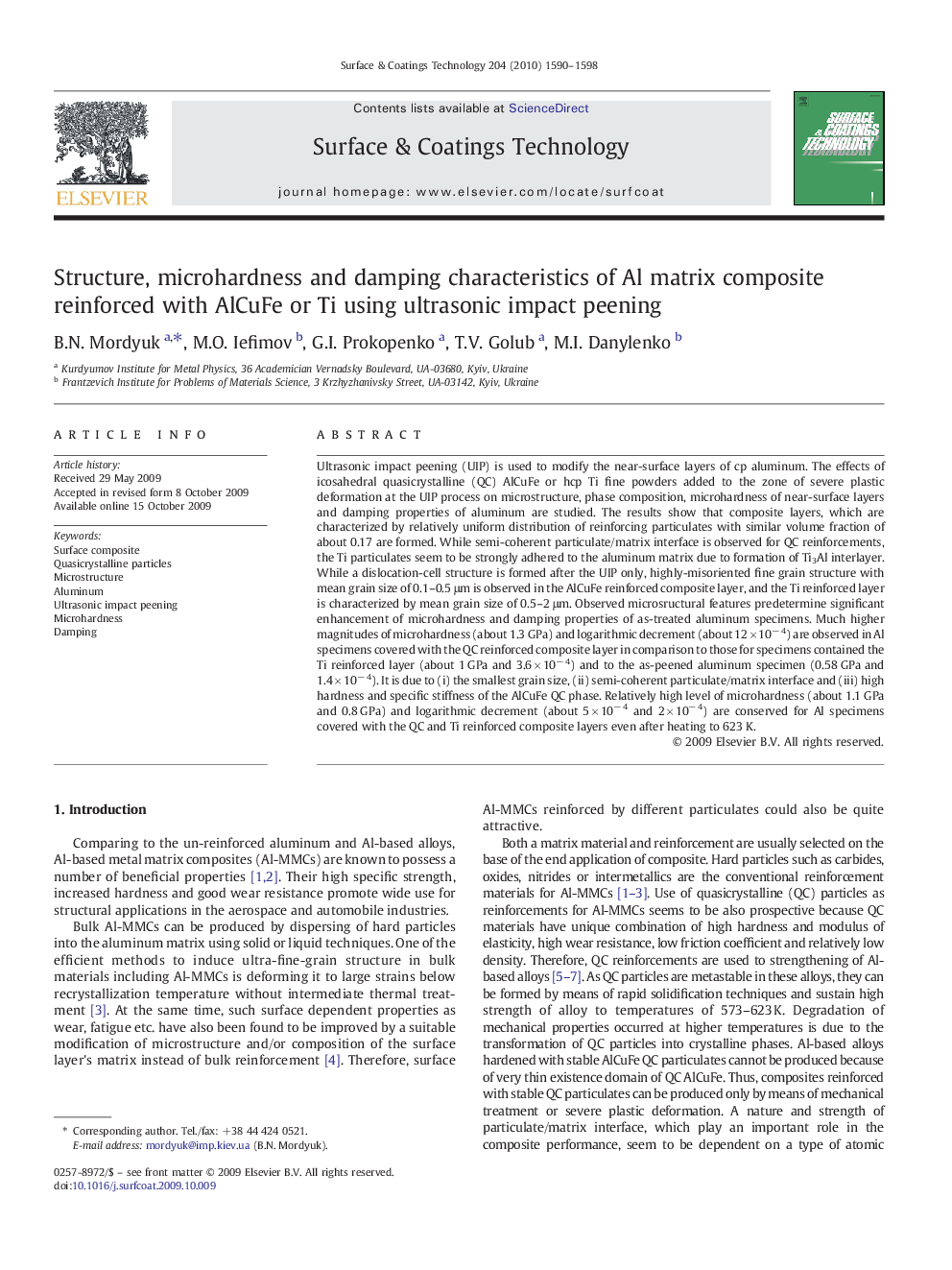| Article ID | Journal | Published Year | Pages | File Type |
|---|---|---|---|---|
| 1659761 | Surface and Coatings Technology | 2010 | 9 Pages |
Ultrasonic impact peening (UIP) is used to modify the near-surface layers of cp aluminum. The effects of icosahedral quasicrystalline (QC) AlCuFe or hcp Ti fine powders added to the zone of severe plastic deformation at the UIP process on microstructure, phase composition, microhardness of near-surface layers and damping properties of aluminum are studied. The results show that composite layers, which are characterized by relatively uniform distribution of reinforcing particulates with similar volume fraction of about 0.17 are formed. While semi-coherent particulate/matrix interface is observed for QC reinforcements, the Ti particulates seem to be strongly adhered to the aluminum matrix due to formation of Ti3Al interlayer. While a dislocation-cell structure is formed after the UIP only, highly-misoriented fine grain structure with mean grain size of 0.1–0.5 μm is observed in the AlCuFe reinforced composite layer, and the Ti reinforced layer is characterized by mean grain size of 0.5–2 μm. Observed microsructural features predetermine significant enhancement of microhardness and damping properties of as-treated aluminum specimens. Much higher magnitudes of microhardness (about 1.3 GPa) and logarithmic decrement (about 12 × 10− 4) are observed in Al specimens covered with the QC reinforced composite layer in comparison to those for specimens contained the Ti reinforced layer (about 1 GPa and 3.6 × 10− 4) and to the as-peened aluminum specimen (0.58 GPa and 1.4 × 10− 4). It is due to (i) the smallest grain size, (ii) semi-coherent particulate/matrix interface and (iii) high hardness and specific stiffness of the AlCuFe QC phase. Relatively high level of microhardness (about 1.1 GPa and 0.8 GPa) and logarithmic decrement (about 5 × 10− 4 and 2 × 10− 4) are conserved for Al specimens covered with the QC and Ti reinforced composite layers even after heating to 623 K.
